what happened to rhe mgm studios lion doorknockers
Metro-Goldwyn-Mayer (commonly known asMGM and also known every bitMetro-Goldwyn-Mayer Pictures orMetro-Goldwyn-Mayer Studios Inc.), is an American media company, involved primarily in the production and distribution of films and boob tube programs. Information technology is responsible for the cosmos ofTom and Jerry andDroopy cartoons via its cartoon studio.
The rights to MGM'southward cartoons are currently owned by Warner Bros. MGM was bought by Amazon in 2022.
Contents
- ane History
- 1.1 MGM cartoon shorts
- i.2 MGM Entertainment
- 2 The MGM library
- iii Gallery
- 4 References
- v External links
History
- Founding
Metro-Goldwyn-Mayer was established on Apr 17, 1924, following the merger of Metro Pictures Corporation, Goldwyn Pictures, and Louis B. Mayer Pictures. It was established under the governance of theater chain Loews, Inc. In 1952, as a settlement of the government's restraint-of-trade action, Usa 5. Paramount Pictures, Inc. 334 US 131 (1948), Loews, Inc. gave up command of MGM.
MGM cartoon shorts
MGM had been involved in the distribution of cartoons since 1930, when it started distributing Ub Iwerks' Flip the Frog cartoons.
In 1934, MGM contracted with animation producers/directors Hugh Harman and Rudolf Ising to produce a new series of colour cartoons. Harman and Ising came to MGM after breaking ties with Leon Schlesinger and Warner Bros., and brought with them their popular Looney Tunes character, Bosko. These were known as Happy Harmonies, and in many ways resembled the Looney Tunes' sister series, Merrie Melodies. The Happy Harmonies regularly ran over budget, and MGM dismissed Harman-Ising in 1937 to start its own blitheness studio. initial struggles with a poorly received series of The Helm and the Kids cartoons, the studio rehired Harman and Ising in 1939, and Ising created the studio's first successful animated character, Barney Bear. Even so, MGM's biggest cartoon stars would come up in the form of the cat-and-mouse duo Tom and Jerry, created by William Hanna and Joseph Barbera in 1940. The Tom and Jerry cartoons won seven Academy Awards between 1943 and 1953. In 1941, Tex Avery, another Schlesinger alumnus, joined the animation department. Avery gave the unit its image, with successes like the Droopy series.
Avery left the studio in 1953, leaving Hanna and Barbera to focus on the Tom and Jerry and Droopy series.
The year 1957 marked the end of MGM's animation department, as the studio determined it could generate the same amount of revenue by reissuing older cartoons as it could by producing and releasing new ones.[1] William Hanna and Joseph Barbera, past then the heads of the MGM cartoon studio, took most of their unit of measurement and made their ain company, HB Enterprises. HB Enterprises would later exist renamed Hanna-Barbera Productions.
In 1961, MGM resumed the release of new Tom and Jerry shorts, and product moved to Rembrandt Films in Prague, Czechoslovakia (now the Czech republic) under the supervision of Gene Deitch. Deitch'south Tom and Jerry cartoons are very different in way from the original Hanna and Barbera style of animation. In 1963, the production of Tom and Jerry returned to Hollywood under Chuck Jones and his Sib Belfry 12 Productions studio (later captivated by MGM and renamed MGM Animation/Visual Arts). Jones' group also produced The Dot and the Line, as well as producing the classic television version of Dr. Seuss's How the Grinch Stole Christmas! (with the vox of Boris Karloff) in 1966. This run of Tom and Jerry ended in 1967, and the last brusque created by Sib Tower 12 for MGM was The Bear That Wasn't.
MGM Entertainment
MGM purchased United Artists in 1981 and formed MGM/UA.
On August 7, 1985, Turner Broadcasting System offered to buy MGM/UA. As film licensing to television became more complicated, Ted Turner saw the value of acquiring MGM'due south film library for his Superstation WTBS. On March 25 of the following yr, the deal was finalised in a greenbacks-stock bargain for $1.5 billion, and the company was renamed "MGM Entertainment Co.".[2] [three] Turner immediately sold MGM's United Artists subsidiary back to Kirk Kerkorian for roughly $480 one thousand thousand. Simply unable to notice financing for the rest of the deal, and due to concerns in the fiscal community over the debt-load of his companies, on August 26, 1986, Turner was forced to sell MGM'southward production and distribution assets to United Artists for $300 million.[4] [five] The MGM lot and lab facilities were sold to Lorimar-Telepictures. Turner kept the pre-May 1986 library of MGM films, along with the RKO Radio Pictures and pre-1950 Warner Bros. films which United Artists had previously purchased.
How much of MGM'due south dorsum itemize Turner actually obtained was a point of conflict for a time; eventually, it was determined that Turner owned all of the pre-May 1986 MGM library, besides every bit the pre-1950 Warner Bros. catalog,[half-dozen] [7] the Popeye cartoons released by Paramount (both the pre-1950 WB library and Popeye cartoons were sold to Associated Artists Productions, which was later bought past United Artists), the US/Canadian rights to the RKO library, in addition to MGM's television series and Gilligan'due south Island, produced by UA. Turner began broadcasting MGM films through his Turner Network Television receiver, and caused a controversy when he began "colorizing" many black-and-white classics. His Turner Entertainment Group had risen to success in part through its ownership of the pre-May 1986 MGM library.
The MGM library
Following his brief ownership of the company in 1986, Ted Turner formed Turner Entertainment as a holding visitor for the pre-May 1986 MGM motion-picture show and television library, which he retained.[eight] Afterward Turner'due south holding were purchased by Fourth dimension Warner in 1996, they ultimately became integrated into the Warner Bros. library, though the copyright claimant to these titles is however "Turner Entertainment Co." For some time after the sale, MGM continued to handle abode video distribution of its pre-May 1986 film and Television set library and began to handle abode video distribution of the pre-1950 Warner Bros. films; those rights were reassigned to Warner Habitation Video in 1999.[9]
Gallery
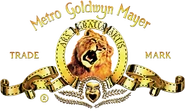
Logo from 1986 to 2021.
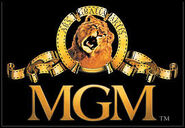
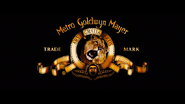
On-screen logo (2012-2021), introduced in Skyfall.
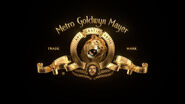
On-screen logo (2021-nowadays)
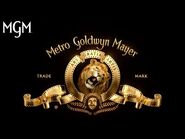
MGM AV LOGO
References
- ↑ Barbera, J: How Beak & Joe met Tom & Jerry, interviews with William Hanna and Joseph Barbera. Warner Abode Video, 2005
- ↑ "Chicago Tribune: Turner May Sell Equity In Company"
- ↑ "Turner Sells The Studio, Holds On To The Dream – Los Angeles Times"
- ↑ "Turner To Sell Mgm Assets"
- ↑ "Turner, United Artists Close Deal"
- ↑ "Media History Digital Library : Complimentary Texts : Download & Streaming : Internet Archive"
- ↑ WB retained a pair of features from 1949 that they merely distributed, and all short subjects released on or later September 1, 1948, in add-on to all cartoons released on or later on August 1, 1948.
- ↑ "Turner Sells Fabled MGM just Keeps a Lion'southward Share"
- ↑ "MGM REGAINS VIDEO RIGHTS; $225 MILLION DEAL TO Assist SELL DVDS. - Free Online Library"
External links
- Official website
mayfieldwasonever.blogspot.com
Source: https://tomandjerry.fandom.com/wiki/Metro-Goldwyn-Mayer
0 Response to "what happened to rhe mgm studios lion doorknockers"
Post a Comment